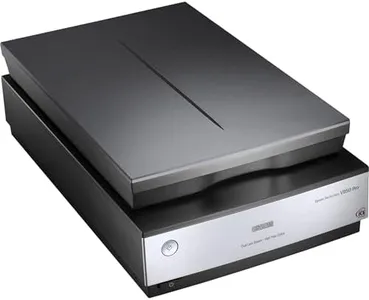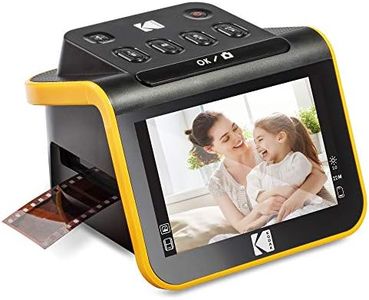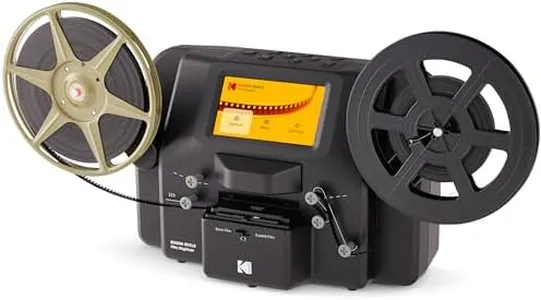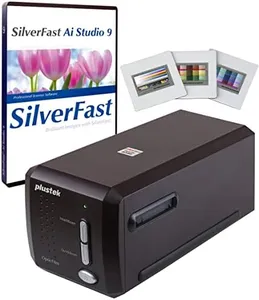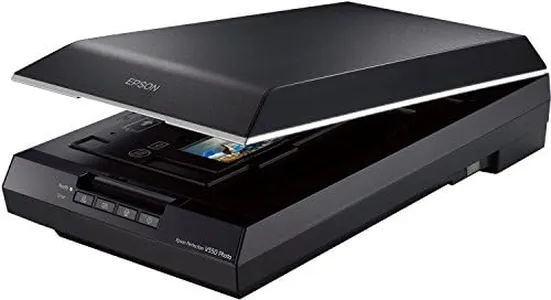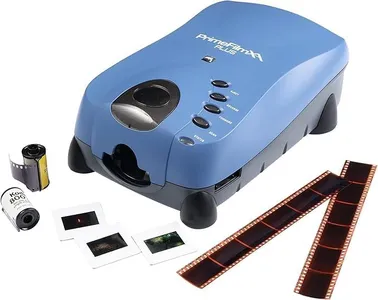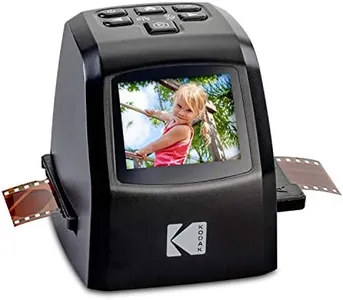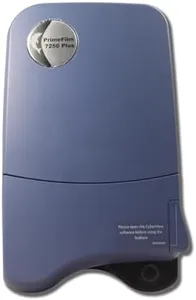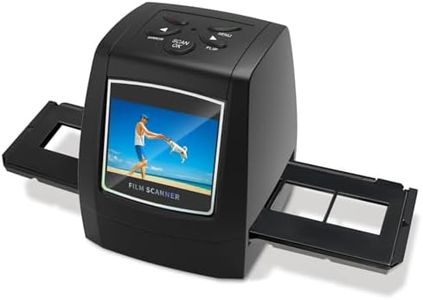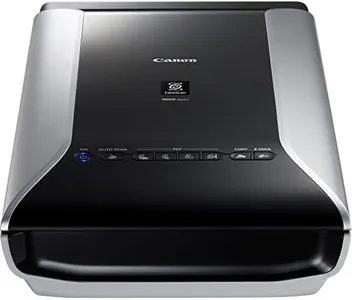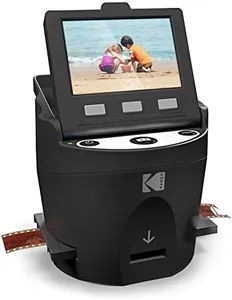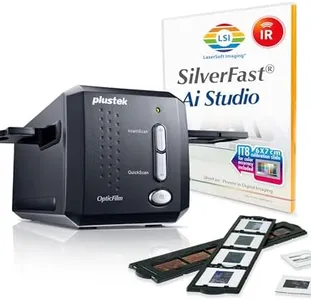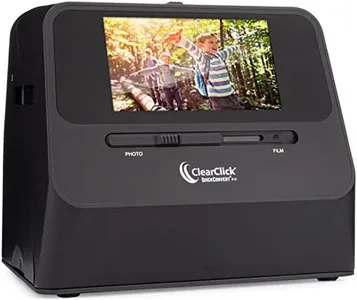10 Best Photo Negative Scanners 2025 in the United States
Our technology thoroughly searches through the online shopping world, reviewing hundreds of sites. We then process and analyze this information, updating in real-time to bring you the latest top-rated products. This way, you always get the best and most current options available.

Our Top Picks
Winner
Epson Perfection V850 Pro scanner
Most important from
478 reviews
The Epson Perfection V850 Pro scanner is a solid choice for those looking to digitize photos and negatives with exceptional quality. One of its standout features is the impressive 6400 dpi resolution, which allows for highly detailed scans. Additionally, the scanner boasts a remarkable dynamic range with a Dmax of 4.0, enabling smooth gradations and fine shadow details that are crucial for preserving the nuances of photographs. The exclusive dual lens system is another plus, as it automatically selects the best lens for the type of scan being performed, optimizing results without requiring much input from the user.
In terms of compatibility, the V850 Pro works with various operating systems, including both older and newer versions of Windows and Mac OS, making it versatile for a wide range of users. Its ability to handle multiple film types further enhances its appeal, ensuring that both amateur and professional photographers can make use of its capabilities.
There are some drawbacks to consider. The scanner is relatively heavy at 20.9 pounds, which may be cumbersome for those looking for portability. Additionally, while it offers excellent scanning quality, the scan speed could be an issue for users who need to process large batches of images quickly. The setup may also be a bit complex for those who are not tech-savvy, which could lead to some frustration during initial use.
Most important from
478 reviews
KODAK Slide N SCAN Film & Slide Scanner Digitizer with 5” LCD Screen, Quickly Convert Negatives & Slides to Digital 22MP JPEG Photos, Compatible with 135, 126 and 110 Film & Slides
Most important from
11477 reviews
The Kodak Digital Film Scanner is a versatile device designed to help you relive old memories by converting a variety of film types and slides into high-resolution digital photos. With its impressive 22MP resolution, it ensures your converted images are sharp and clear. The large 5” LCD screen is a significant advantage, allowing users to preview and edit photos directly on the device, making it user-friendly even for those not tech-savvy.
Additionally, the scanner supports a wide range of film types, including 35mm, 126, and 110, accommodating most users' needs. The device's easy-load film inserts and quick-feeding tray technology streamline the scanning process, making it efficient and straightforward. Furthermore, the scanner's compatibility with SD cards up to 32GB and its connectivity via USB and HDMI ensure it works well with modern devices.
However, a notable downside is the lack of SD card inclusion, which means you'll need to purchase one separately. Additionally, while the scanner offers basic editing tools, professional photographers might find these features somewhat limited. Despite these minor drawbacks, the Kodak Digital Film Scanner's combination of high resolution, ease of use, and broad compatibility makes it a strong contender for anyone looking to digitize their old photo negatives and slides.
Most important from
11477 reviews
KODAK REELS 8mm & Super 8 Films Digitizer Converter with Big 5” Screen, Scanner Converts Film Frame by Frame to Digital MP4 Files for Viewing, Sharing & Saving on SD Card for 3” 4” 5” 7” and 9” Reels
Most important from
715 reviews
The KODAK REELS 8mm & Super 8 Films Digitizer Converter is a handy device for those looking to digitize old 8mm and Super 8mm films. It offers a significant benefit with its frame-by-frame digitizing process using an 8.08-megapixel sensor, which captures images in high-definition 1080p, ensuring clear and detailed digital files. However, it's important to note that it does not capture sound. The large 5” screen and touch buttons make it user-friendly, allowing easy navigation and adjustment of settings directly on the device without the need for additional software or external editing equipment.
This can be very convenient for users who prefer a straightforward, all-in-one solution. The device is compact and portable, making it easy to transport and store, and it comes with several useful accessories, including an empty film reel and reel adapters. Compatibility-wise, it supports various reel sizes (3” to 9”) and saves the digitized files directly onto an SD card, which can then be transferred to a computer or other devices via the provided USB cable. This makes it versatile for sharing and viewing the digitized films on multiple platforms.
The resolution of 240 might be considered low by professional standards, potentially affecting the sharpness and quality of the digitized films. Additionally, the lack of sound capture may be a drawback for some users. Despite these minor limitations, the KODAK REELS Digitizer is a thoughtful gift for movie enthusiasts and can breathe new life into vintage films, making it an ideal choice for family or friends who want to preserve and enjoy their cherished memories.
Most important from
715 reviews
Buying Guide for the Best Photo Negative Scanners
Choosing the right photo-negative scanner can be a game-changer for preserving and digitizing your old film negatives. The right scanner will ensure that you get high-quality digital images that are true to the original negatives. When selecting a photo-negative scanner, it's important to consider several key specifications to ensure you get the best fit for your needs. Understanding these specs will help you make an informed decision and get the most out of your purchase.FAQ
Most Popular Categories Right Now
